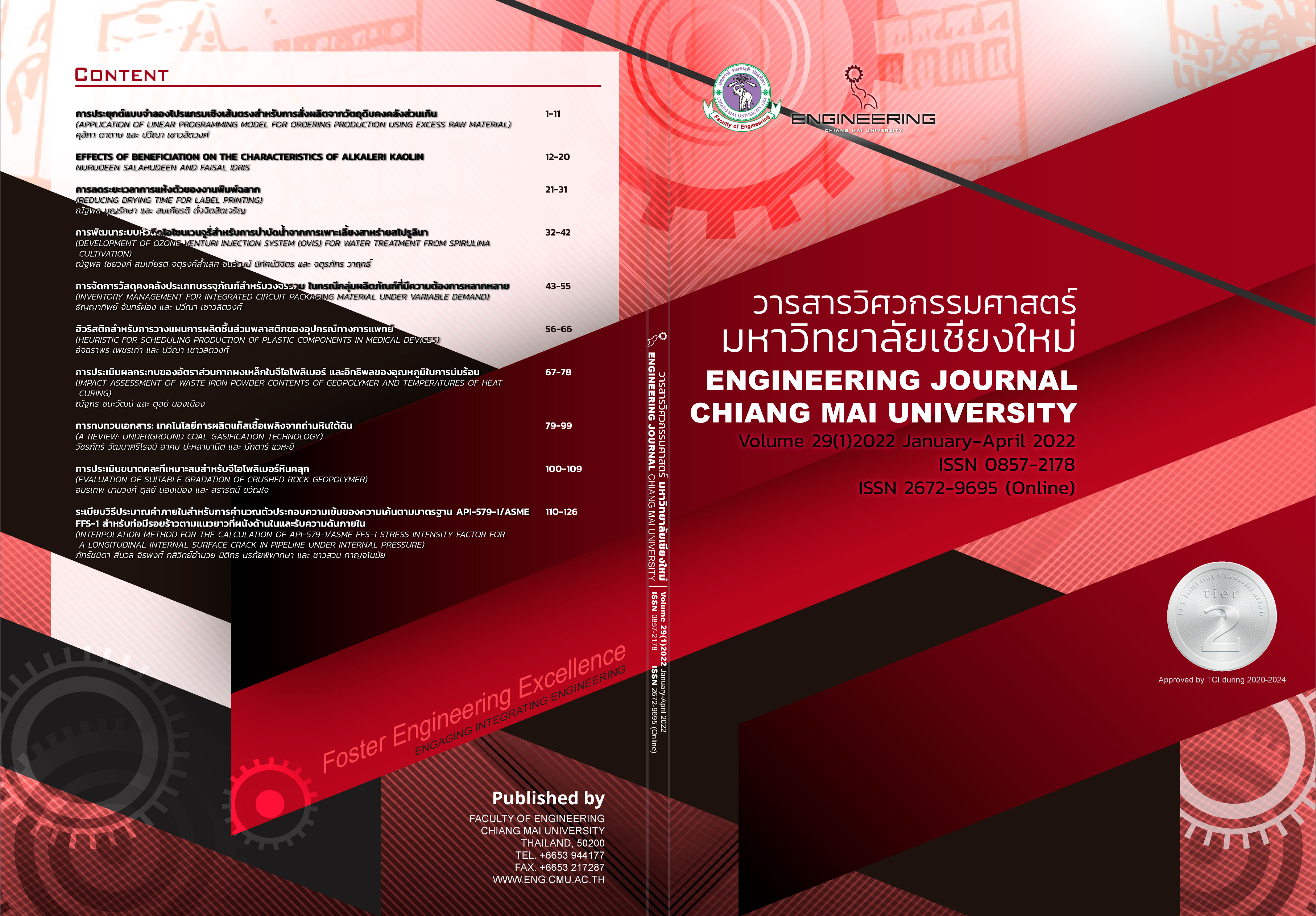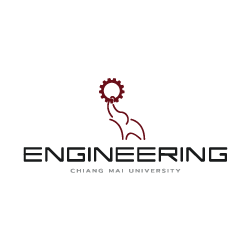Interpolation Method for the Calculation of API-579-1/ASME FFS-1 Stress Intensity Factor for a Longitudinal Internal Surface Crack in Pipeline under Internal Pressure
Keywords:
pipeline, crack, stress intensity factor, API-579-1/ASME FFS-1 standard, interpolationAbstract
Pipelines are responsible for transporting liquid in various industries, e.g., petroleum, chemical and food industries. After a long period of service, the cracks are possible. Based on the linear-elastic fracture mechanics, the complete fracture of crack can occur if the stress intensity factor (K) at crack tip is equal or greater than the critical stress intensity factor (Kc) of material. At present, the calculation of K proposed by the fitness-for-service assessment standard (API-579-1/ASME FFS-1) is wildly applied for the cracked pipelines. However, the precision of K depends on the interpolation method of influence coefficients (G0, G1, G2, G3, G4) within the K solution. Therefore, 38 case studies of the longitudinal internal surface crack in a pipeline under internal pressure were selected to analyze the effect of interpolation method on the precision of K. The methodology covered both linear and nonlinear interpolations. The precisions of K from various interpolation methods were determined by comparing the results with K calculated by finite element analysis. It was found that the Ks from the linear interpolation were significantly different from those from the finite element analysis, i.e., the maximum difference of 25% for very small thickness pipe, and the maximum difference of 16% for small thickness pipe. While, the differences between the Ks from the cubic spline interpolation using 5 data of t/Ri and the finite element analysis were lower, i.e., the maximum difference of 7.3%. Therefore, the cubic spline interpolation using 5 data of t/Ri was the most appropriate interpolation method for the K calculation.
References
S. M. Nabavi, and S. S. H. Rekavandi, “Analysis of stress intensity factors for functionally graded cylinders with multiple longitudinal cracks using finite element method,” Applied and Computational Mechanics, vol. 13, no. 2, pp. 125-136, 2019.
M. Gonzalez, and M. Martinez, “Stress intensity factors for axial cracks in pressurized cylindrical elements using the boundary element method,” in Proc. American Society of Mechanical Engineers, Pressure Vessels and Piping Division (Publication) PVP, 2013, vol 3.
H. J. Schindler, “Prediction of rapid ductile crack extension and arrest by an analytical approach,” in International Pipeline Conference, 2010, vol. 2, pp. 341–350.
K. D. Bae, C. G. Kim, Z. Murni, S. J. Kim, and Y. J. Kim, “Reference Stress-Based J Estimation of Circumferential Through-Wall Cracked Elbow with Unequal Thickness under Bending,” in Proc. American Society of Mechanical Engineers, Pressure Vessels and Piping Division (Publication) PVP, 2014, vol. 6A.
C. Q. Li, G. Fu, and W. Yang, “Stress intensity factors for inclined external surface cracks in pressurised pipes,” Engineering Fracture Mechanics, vol. 165, Oct., pp. 72-86, 2016.
API 579-1/ASME FFS-1 Fitness-for-service, American Petroleum Institute, Jun., 2016.
H. M. Shu, J. Petit, and G. Bezine, “Stress intensity factors for radial cracks in thick walled cylinders—
I. Symmetrical cracks,” Engineering Fracture Mechanics, vol. 49, no. 4, Nov., pp. 611-623, 1994.
S. Rahman, M. Gao, and R. Krishnamurthy, “API 579 G-Factors for K calculations and improvements for assessment of crack-like flaws in pipelines,” in International Conference on Fracture, 2013, vol. 5, pp. 3766-3775.
ภัทร์ชนิดา สีนวล, จิรพงศ์ กสิวิทย์อำนวย, นิติกร นรภัยพิพากษา และชาวสวน กาญจโนมัย, “การปรับปรุงวิธีคำนวณค่าตัวประกอบความเข้มของความเค้นของมาตรฐาน API-579-1/ASME FFS-1 สำหรับรอยร้าวตามแนวยาวที่ผนังด้านในของท่อรับความดันภายใน,” ในการประชุมวิชาการเครือข่ายวิศวกรรมเครื่องกลแห่งประเทศไทย ครั้งที่ 35, 2564, หน้า 416-424.
ABAQUS 6.13 Analysis User's Guide. Dassault Systemes Simulia Corp, 2013.
A. Gilat, Numerical methods for engineers and scientists. Wiley Global Education, 2013.
O. L. Bowie, and C. E. Freese, “Elastic analysis for a radial crack in a circular ring,” Engineering Fracture Mechanics, vol. 4, no. 2, pp. 315-321, 1972.
Downloads
Published
Issue
Section
License
ลิขสิทธิ์ของบทความที่ตีพิมพ์ในวารสารฉบับนี้จะยังเป็นของผู้แต่งและยินยอมให้สิทธิ์เผยแพร่กับทางวารสาร
การเผยแพร่ในระบบวารสารแบบเปิดนี้ บทความจะสามารถนำไปใช้ได้ฟรีในการศึกษา และในทางที่ไม่เกี่ยวกับการค้า




